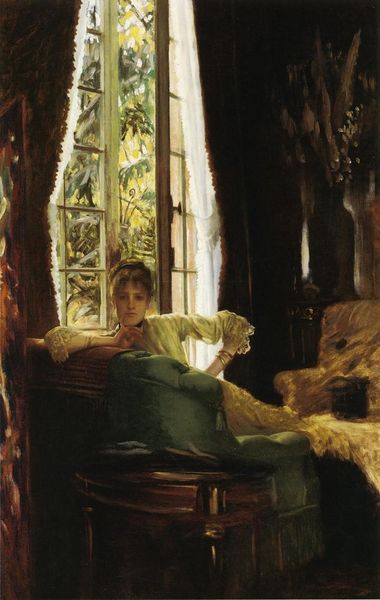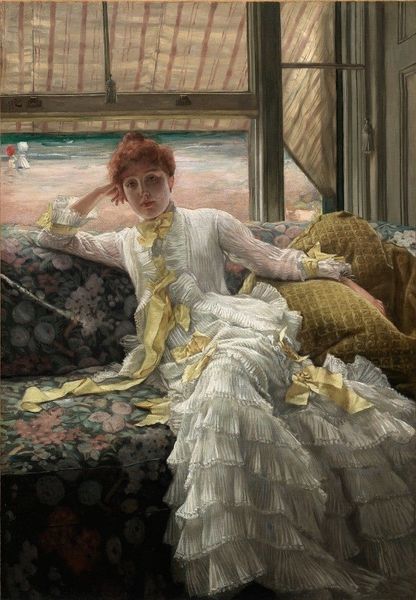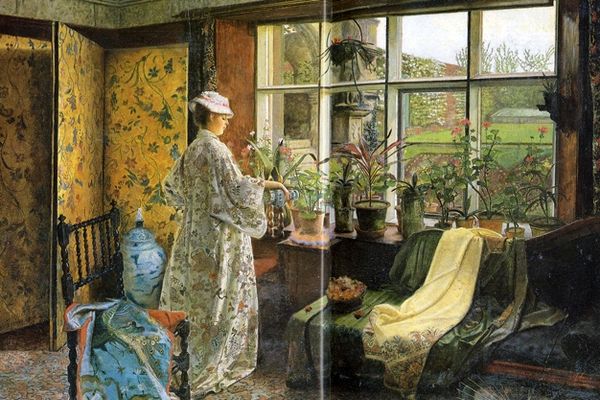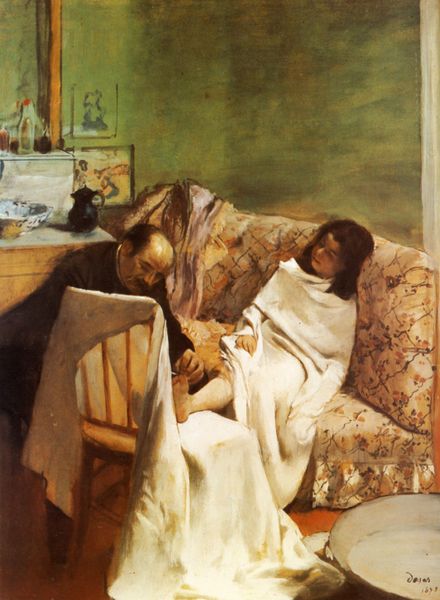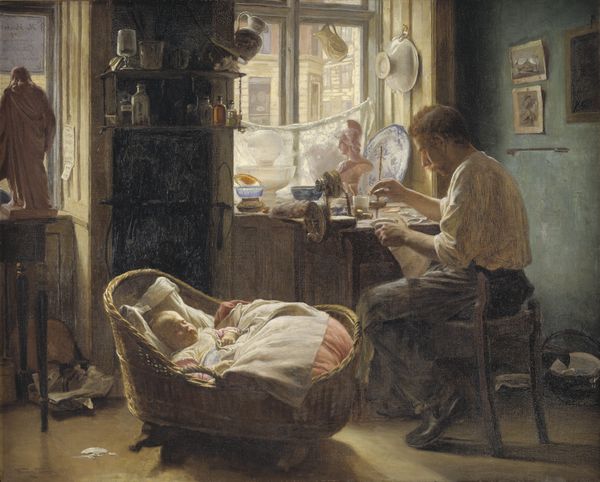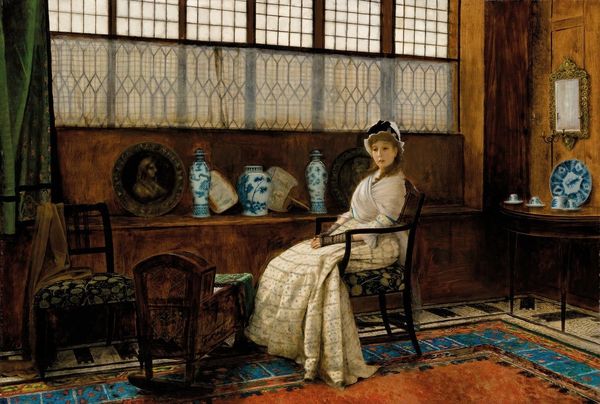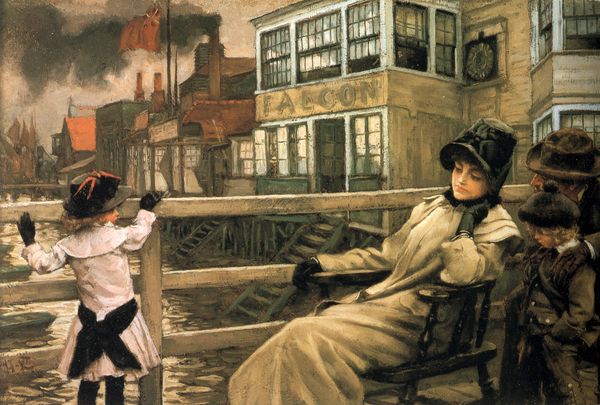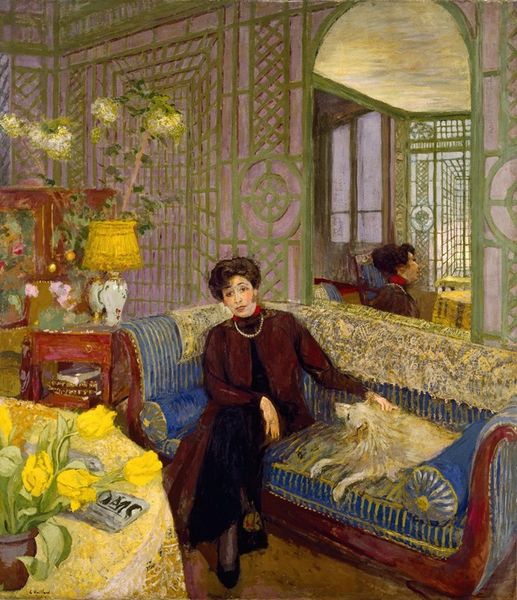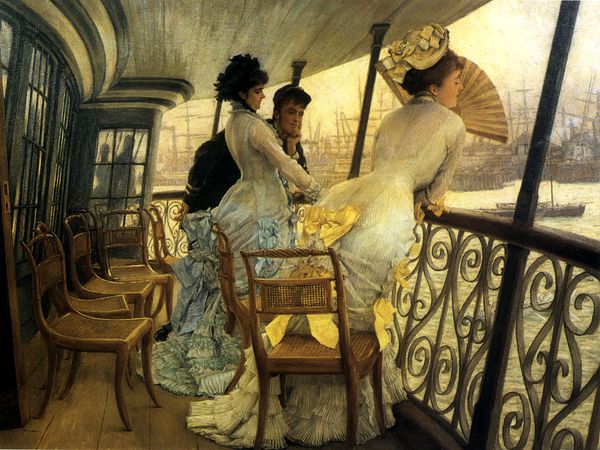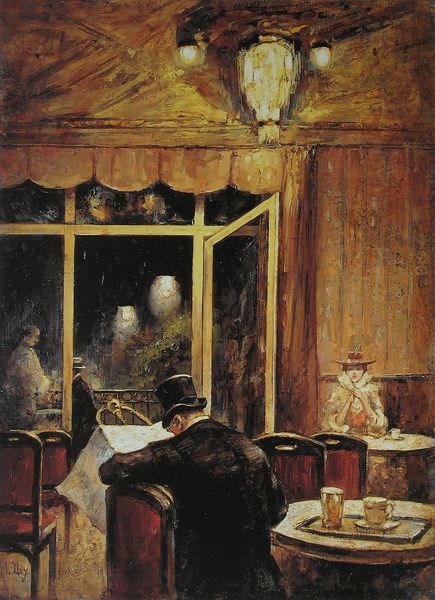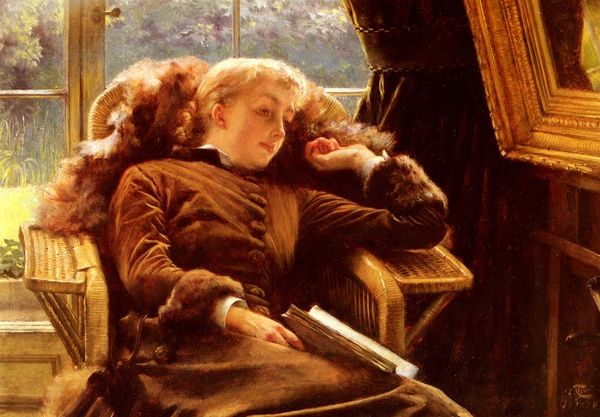
painting, oil-paint
#
portrait
#
boat
#
ship
#
painting
#
impressionism
#
oil-paint
#
landscape
#
dark-toned
#
cityscape
#
genre-painting
Copyright: Public domain
Editor: James Tissot's "A Passing Storm," created in 1876 using oil paint, presents a rather intriguing domestic scene. I am particularly struck by how the interior setting is juxtaposed with the dramatic cityscape visible through the window. What catches your eye when you look at this piece? Curator: The composition is undeniably striking. Tissot's choice to frame the female figure within the opulent interior, juxtaposed against the bustling port scene, speaks volumes about the confined roles afforded to women of her class during the late 19th century. What might the passing storm symbolize in relation to her life and limited agency? Editor: I hadn't considered that. It seems she is confined, observing life from a distance. Do you see any parallels between her situation and, say, issues of gender or class that resonate even today? Curator: Absolutely. We can draw connections to contemporary debates about intersectionality. Consider how factors like gender, class, and social expectation can still limit individuals’ access and agency. Tissot, though a product of his time, unwittingly provides a visual critique of societal constraints that linger. Editor: It's fascinating how much a single painting can tell us about the social and political climate of its time. Curator: Indeed. The beauty lies not just in the artistic skill, but in how it sparks crucial dialogues about the complexities of human experience across history. Are there modern issues the work brings to your mind? Editor: Perhaps issues of isolation or the way we often passively observe events unfold around us, shielded by our own comfort and privilege. I find this painting offers many important layers to explore. Curator: Exactly! The painting allows a critical understanding of the female subject and how the portrait’s mood is created to evoke empathy with contemporary struggles that reflect these historical issues.
Comments
No comments
Be the first to comment and join the conversation on the ultimate creative platform.
